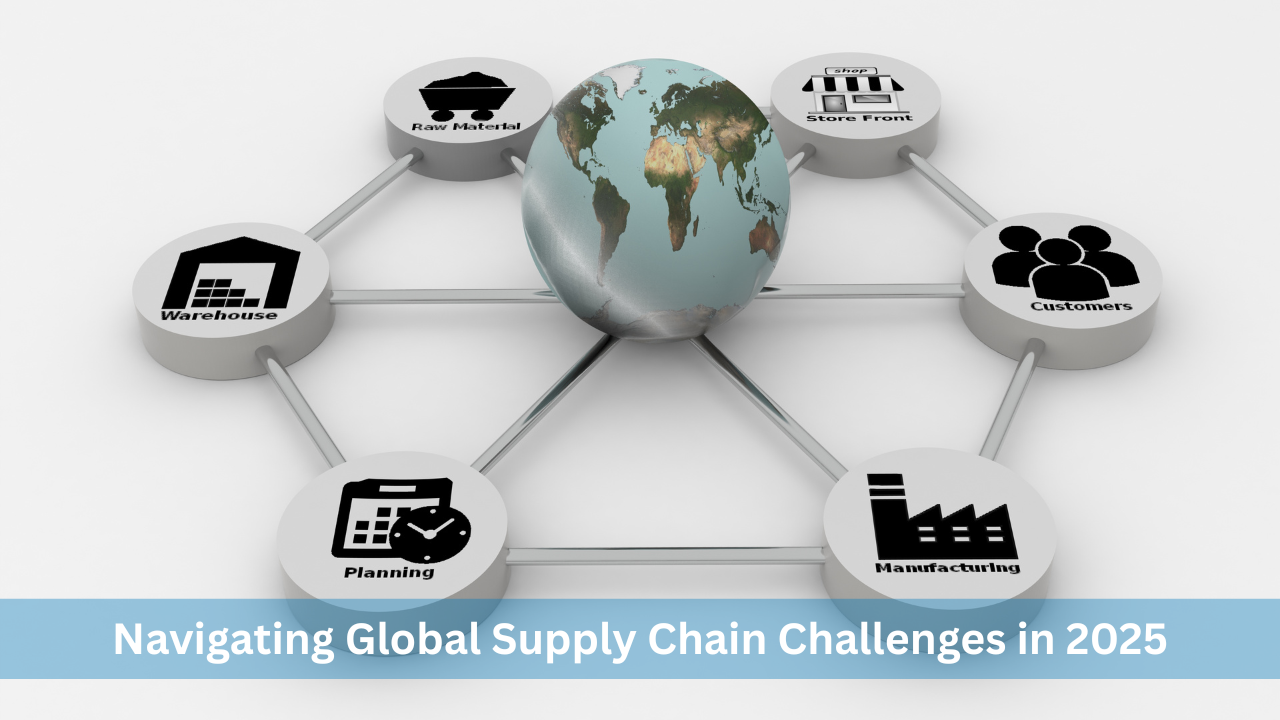Navigating Global Supply Chain Challenges in 2025: A Guide for Indian Entrepreneurs
In 2025, supply chains across the globe are being redefined. From rising costs and shipping delays to international policy shifts, managing a smooth flow of goods has become more complex than ever. For Indian entrepreneurs, understanding these global challenges and finding smart solutions is not just a necessity—it’s a competitive advantage.
This guide explores what’s really happening in the world of supply chains, how it’s affecting Indian businesses, and what steps you can take to stay resilient and grow sustainably.
Why Do Supply Chain Challenges Matter Now?
A supply chain is the entire process involved in producing and delivering a product to the customer. When everything works well, it seems simple. But any disruption—like a port closure in China, a new trade policy in the US, or a shortage of containers—can affect your ability to deliver on time.
In recent years, multiple factors have shaken global supply chains:
- Post-pandemic recovery: COVID-19 created a backlog that’s still clearing in parts of the world.
- Geopolitical issues: Trade disputes, war zones, and changing policies between countries have made international shipping more expensive and slower.
- Raw material shortages: Many industries are facing limited availability of key materials, pushing up costs.
- Climate events: Floods, droughts, and extreme weather are disrupting transport and agriculture.
If your business depends on imports, exports, or manufacturing, these are not distant problems—they directly impact your margins and delivery timelines.
India’s Changing Role in Global Supply Chains
India is no longer just a participant in the global supply chain—it is becoming a preferred hub. With global companies looking to diversify away from traditional manufacturing giants, India is rising as a strong alternative.
Major developments include:
- Make in India 2.0: Government-led schemes are encouraging local production and self-reliance.
- PLI schemes (Production-Linked Incentives): These have helped sectors like electronics, pharma, and textiles scale up rapidly.
- Improved digital infrastructure: From real-time tracking to automated inventory systems, tech is helping Indian businesses run smarter supply chains.
- Strategic location: India’s proximity to key markets in Asia, the Middle East, and Africa gives it an edge.
More importantly, Indian entrepreneurs have shown resilience in adapting quickly. Businesses that once relied only on imports are now exploring local sourcing, better inventory planning, and stronger logistics partnerships.
You can read more such inspiring business trends on Your Story.
What You Can Do as an Entrepreneur?
To survive and grow in today’s dynamic supply chain environment, here are a few important steps:
1. Diversify Your Supplier Base
Depending on one country or one supplier for raw materials or products is risky. Look for alternative vendors in India and nearby countries. This not only protects you from global disruptions but also allows for quicker deliveries.
2. Build Stronger Inventory Buffers
Just-in-time delivery might save money, but it also increases risk. If your industry is prone to shipping delays or material shortages, maintain a small buffer stock. This gives you time to react during a crisis.
3. Use Technology for Visibility
Today, even small businesses can access supply chain management tools. These tools offer live updates on shipments, automate order management, and predict potential delays. The government’s push for digitisation is also making these tools more affordable.
You’ll find many digital transformation success stories of MSMEs on Your Story.
4. Strengthen Local Partnerships
Work closely with transporters, warehousing partners, and regional suppliers. These relationships help during peak demand, or when international shipping slows down.
5. Stay Informed and Adaptable
Keep track of international news, shipping trends, and new policies that affect your industry. A sudden tax on a material or a change in import-export norms can impact you. Staying alert helps you take faster action.
Platforms like Your Story regularly cover such updates and explain them in ways that are easy to understand.
Government Support for Supply Chain Growth
Several initiatives have been launched to support businesses in improving supply chain efficiency:
- Gati Shakti Yojana: A national infrastructure plan to unify and speed up logistics.
- Freight corridors and new ports: To reduce transportation time and cost.
- Digital India: Pushing for paperless trade, e-invoicing, and GST-linked logistics to improve transparency and reduce delays.
By staying aligned with these initiatives, entrepreneurs can access faster, cheaper, and more reliable supply routes.
The Road Ahead: Resilience Over Speed
While global disruptions may continue, businesses that invest in resilience will be the ones to thrive. It’s no longer about being the fastest—it’s about being the most prepared.
Adaptability, digital readiness, and a solid local network will define the supply chain leaders of tomorrow.
If you’re an entrepreneur or startup founder in India, this is the right time to revisit your supply chain model. Learn from what’s happening globally, but act locally and smartly. And keep learning—Your Story is here to support you with the latest updates, interviews, and business insights.







